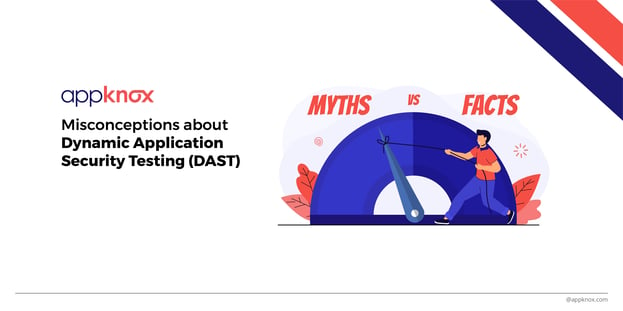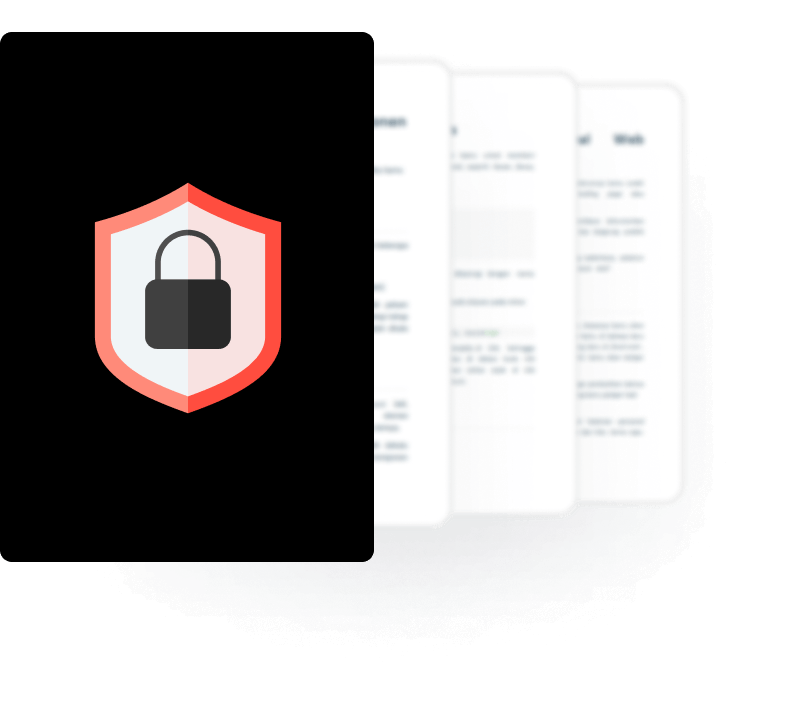
BLOG

BLOG
Dynamic Application Security Testing (DAST) has seen significant advancements in the last decade. However, there is a common misconception that these tests must be conducted by human experts. In this article, we will dispel the top 5 misconceptions about DAST like this one.
Organizations that develop mobile apps need to be aware of the potential cyber security threats. These threats can lead to the loss of users' private data, which can have serious repercussions for industries like fintech, healthcare, ecommerce, etc.
In order to prevent these malicious practices, Dynamic Application Security Testing (DAST), a security testing tool, has been introduced. It helps to weed out specific vulnerabilities in web applications whenever they run in the production phase.
DAST completely executes the compiled mobile binary, authenticating the issues by app interaction with real devices, similar to what the end-user does.
When a quality assurance period exists, it promotes the DAST to occur, along with necessary mobile app SLDC testing itineraries such as testing the feature functionality and UX. It will, in turn, enhance the Security and Development teams to utilize the time more effectively and deploy the fixes before app store publication.
Now, we look at the specific issues that DAST identifies, which are not recognizable during the compilation of code:
This is different than Static Application Security Testing (SAST), which examines snippets of the source code of the developers which get check-in during mobile binary compilation. SAST scan test provides full coverage and total amounts of code scan that offer anything and everything which becomes an issue. It allows early identification of code quality issues, but they cannot be validated as real or inaccurate.
The most sophisticated mobile apps integrate both SAST and DAST. However, due to the fundamental differences between these two security tools, some organizations rely on these security tools and are not yet aware of how mobile attacks work.
Misconceptions about DAST for mobile apps can make organizations hesitate in its implementation. Let's dispel some of these DAST myths so organizations can better understand its value.
To test the performance of the software application, the software development team executes code in a run-time environment.
Dynamic testing consists of the following steps:
DAST can be Fully Automated
The innovation and ingenuity of mobile app security not only make it possible to execute mobile apps on real devices through full automation but also deliver more continuous results testing the same way every time, reducing human error.
In general, Google and Apple place all the apps in their app stores after in-depth security testing of all apps. In actuality, their vision is to cultivate the mobile app ecosystem.
Google and Apple laid out standard procedures and tools to support developers in building secure apps. These developers perform compliance checks according to their guidelines that follow APIs along with static vulnerabilities and malware.
But the left-out checkpoints cause a data breach, privacy problems, or vulnerabilities in the third-party libraries used by the app and not only the functionality and dynamic code of the actual apps.
In general, both Google and Apple rely on their developers to take the responsibility that their code is secure.
Still, most mobile apps backed by Android and iOS contain some vulnerability processes or data leakage. So, the main emphasis draws on improving the development and testing procedures. The misconception arises when dynamic testing becomes slower and performs so lately in the development cycle.
DevOps and agile are mobile development cycles that average two weeks to hours or days between both releases. The compressed time between source code creation and binary compilation is one of the critical features as development refines and iterates for suddenly producing new fixes and features.
Modern automated dynamic operates in presenting agile release schedules which authenticate vulnerabilities quickly, safeguard against false positives, and maintain timely releases.
The primary objective of dynamic testing is to confirm that the software product operates based on the business requirements. This testing is known as validation testing and execution testing.
For example: Testing the login details of Gmail accounts requires you to fill in the details of both username and password. Gmail complies with specific conditions to set up a username and password.
The username characters should be 6-digit long. On the other hand, the password consists of 8 characters long and should have a capital letter, one special character, and one numeric value.
Let’s take an example of the following parameters consisting of both usernames and passwords that offer to test the login functionality of Gmail.
|
Parameter |
Username |
Password |
Valid/Invalid Test Data |
|
Parameter 1 |
Simran |
SimRAN@1 |
Valid |
|
Parameter 2 |
Simran |
SimRAN@@ |
Invalid |
|
Parameter 3 |
Simran |
simran@1 |
Invalid |
At the time of testing Gmail login functionality, we pass the above test data simultaneously, and Gmail enables us to inbox while we pass parameter 1 and delivers an error message while passing parameters 2 &3. This result highlights that the code is dynamically responsive and subject to user input.
Here we determine the parameters 2 &3 values are false, but we still enable those to determine how the system enacts with inaccurate input data.
Hence, verification is known as static testing. Validation is known as dynamic testing.
Developers use automated dynamic testing tools to identify vulnerability areas during code sharing snippets, queries, URLs, analysis, IPs, etc., that can be easily spotted and issues get fixed.
The execution of the code exists in dynamic testing, where it examines the functional behavior of the software system, overall system performance, and memory/CPU storage. That is why; these testing names are called ‘dynamic’. This testing is also known as the execution technique or validation technique.
Dynamic testing administers the software and does the output validation with the expected result. Dynamic testing gets executed at all testing levels, and it can be either black or white box testing. However, the software development lifecycle produces high-quality software with lesser resources required.
If automated security testing is integrated into the SDLC, the product appears to have fewer security flaws and vulnerabilities, inviting the attackers to exploit. SDLC stage starts with:
The seamless integration of the security testing tools must integrate within current toolchains to obtain DevSecOps. The mobile DAST tools are modernly automated to build DevOps and consist of plugins for ticketing systems like Jira, CI/CD (like Jenkins, Azure DevOps, and Circle CI) along with robust APIs and rapid analysis.
Since vulnerabilities are recognized towards the SDLC endpoint, remediation usually gets pushed into the next SDLC cycle. The complex vulnerabilities get fixed for release during an emergency.
This generalized statement against dynamic testing is inaccurate and is subject to misconceptions. If the test is fully automated, SDLC integrates, identifies issue locations for devs, and performs in concert with DevOps development time frames and agile. They are recognized in earlier stages with high accuracy and fixed at a lower cost.
DAST for mobile is an integral part of any security and privacy program and thus should outweigh any misconceptions that affect its usage. DAST technology is constantly advancing to keep up with the pace of mobile app development. Organizations should make use of this comprehensive automated testing technology to uncover security flaws in their applications and fix vulnerabilities before they turn into threats.
If you're curious to learn more about DAST, check out our resources on Appknox’s comprehensive approach to DAST.

Hackers never rest. Neither should your security!
Stay ahead of emerging threats, vulnerabilities, and best practices in mobile app security—delivered straight to your inbox.
![]() Exclusive insights. Zero fluff. Absolute security.
Exclusive insights. Zero fluff. Absolute security.
![]() Join the Appknox Security Insider Newsletter!
Join the Appknox Security Insider Newsletter!
